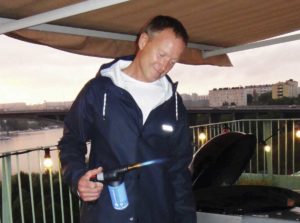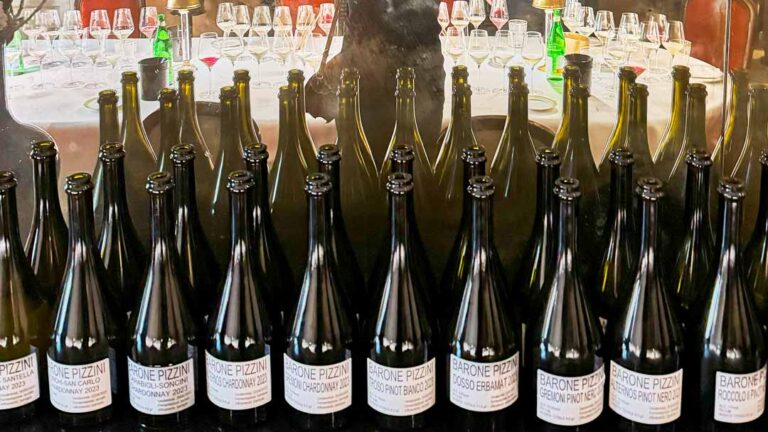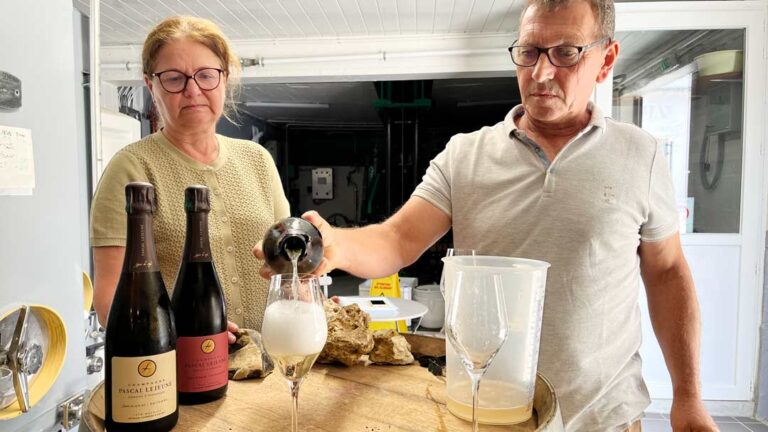A vineyard visit in Champagne
“Down here in Aube, we used to be called ‘the bad boys of Champagne’” says Bertrand Gautherot, winemaker and owner of Vouette & Sorbée. “But not anymore,” he adds, smiling broadly.
Actually, there is no time for either tasting or visits, work in the vineyards must be prioritized, said Bertrand at my initial contact. But OK, come past and we can say hello again. The last time I met Bertrand was when he and his family visited Sweden and held a fascinating tasting of his wines.
We settled in the shade outside his modern production hall. The temperature was a straining 35 degrees C, but that was nothing to worry about, said Bertrand, “there is plenty of water deep down”. The “short” meeting lasted for over three hours; we left the shade for a visit to the Vouette vineyard, which is just behind the office, and walked through the production hall where we enjoyed the cool temperature in the cellar.
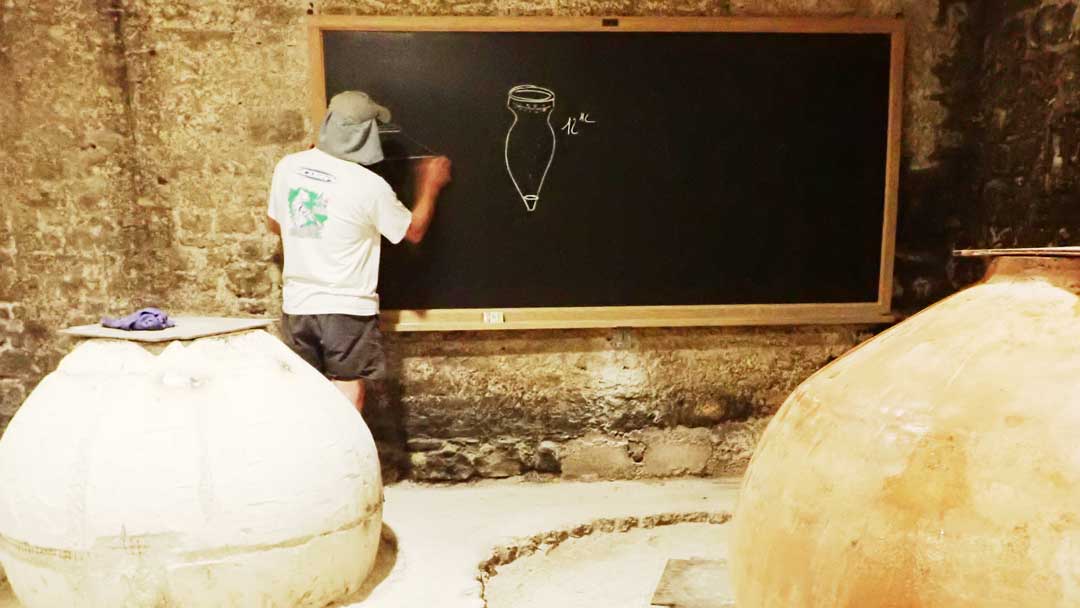
The dedication to the details is evident. For me, Bertrand has a staggering resemblance to Ingemar Stenmark when, with his warm, confident and calm appearance and with knife-edge precision, he explains the details of the victory. [Ed: Ingemar Stenmark is probably the greatest downhill skiing athlete ever, but was famously humble and of few words.] It may sound like a far-fetched comparison, but all the attention to details were just aimed at one thing, winning. Not outspokenly, but implied.
The production comes from seven hectares around the village of Buxières-sur-Arce, of which his brother owns two. His daughter is also active at the winery and the pride shines through when Bertrand describes her studies, skills and progress.
The name Vouette & Sorbée comes from two of the plots with those names. Buying fruit from others has never been on the table, says Bertrand. The average production is about 40,000 bottles per year, but there are peaks and valleys. In 2011, production was only 28,000 bottles and at most the production has reached 50,000 bottles. About half goes on exports and Sweden buys about five per cent of the total production. (Vin & Natur is the Swedish importer.)
All five cuvées are produced without chaptalisation, with spontaneous fermentation and without dosage. The latter means that they should be considered as brut nature, but I think that they feel significantly more solid than what most wines without dosage do.
At one point inside the production hall, Bertrand picks up two vines cleaned of the soil. “Do you see any difference?” he asks, holding them in front of him. The rootstock from the vineyard using herbicides has a wide spread of superficial roots. The rootstock from the biodynamically cultivated soil has virtually no superficial roots at all, all go straight down into the depth where the important soil is found.
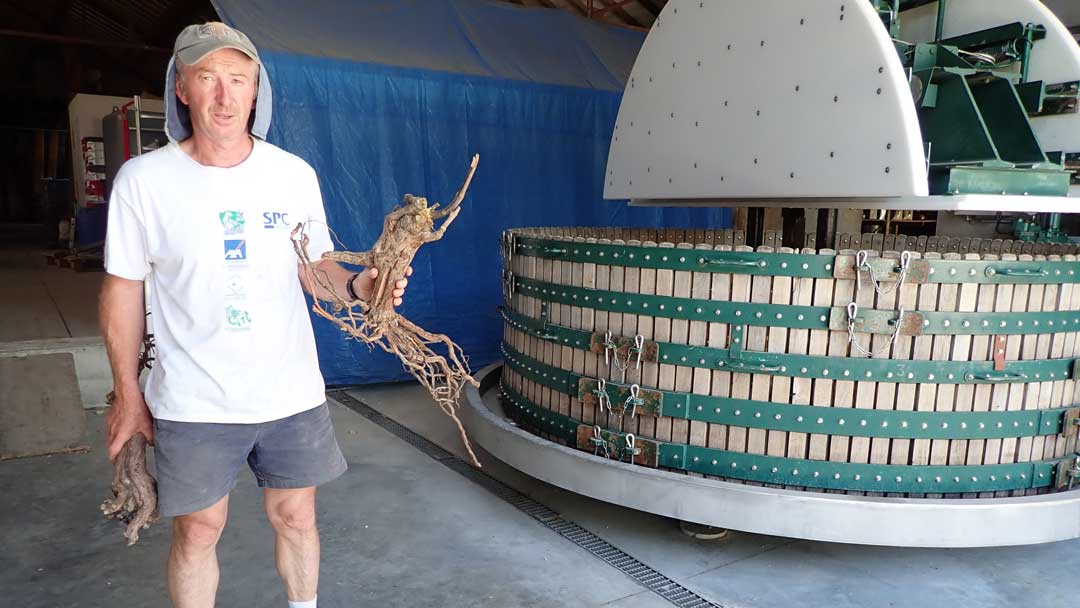
The visit continues and as he goes through the procedure for how to make the biodynamic preparations to be sprayed in the field I comment supportively that this must be a lot of work. “Not at all,” he responds calmly, “it’s only one per cent of all working time, but it is needed to reach all the way.” Again, the competitiveness shines through; no details are left to chance. When asked if he has failed at some point, he bursts into laughter. “Many times, it’s part of the sportsmanship.”
Bertrand experiments a lot or how; what about a tank with skin contact for nine months?
At his four-tonne Coquard press, he describes how important do the pressing right, to let it take up to four, five hours. No must should be separated. I think that he even wanted to keep a watchful eye on that process so that no one increased the pace and shortened the time just to finish the press and be allowed to go home.
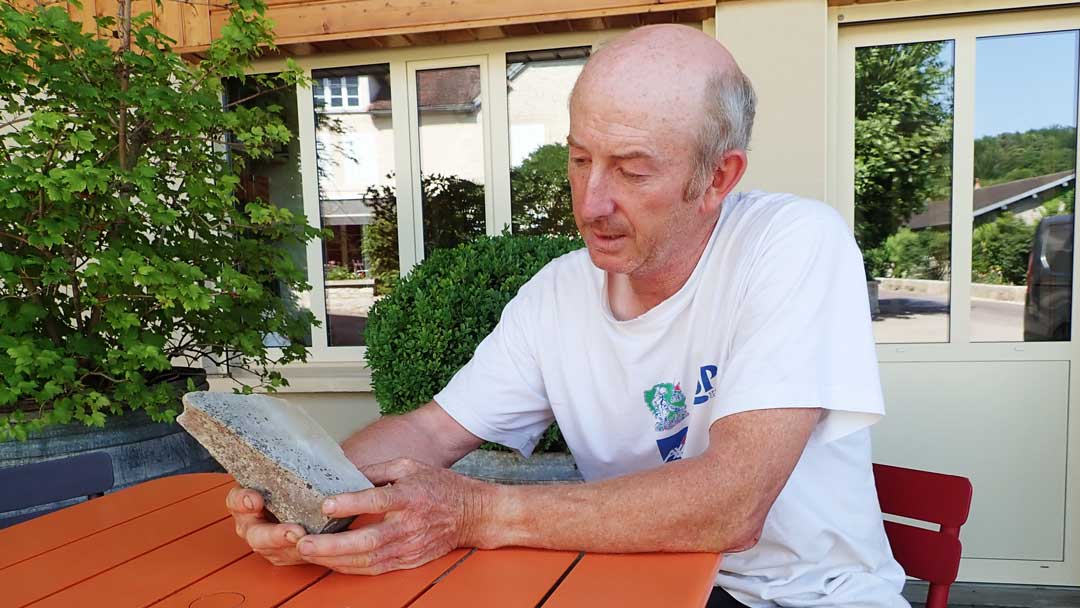
As we pile down to the basement, we talk a bit about ageing. The answer is somewhat neutral, that it is about taste and preferences, but that, for example, Blanc de Argile easily keeps 20 years, while Fidèle may last for ten years and Saignée de Sorbée a maximum of five years.
The wine is aged in different barrels, larger for chardonnay and smaller for pinot noir, all used, from Burgundy. Bertrand also works with a solera and has two 40-hectolitre barrels. One with chardonnay and the other with pinot noir. He uses up to 5% of the solera wine in Fidèle, among others. The barrels are originally old German beer barrels and were purchased in 2006. An interesting detail is that each barrel has evaporation of an estimated one hundred litres of liquid per year.
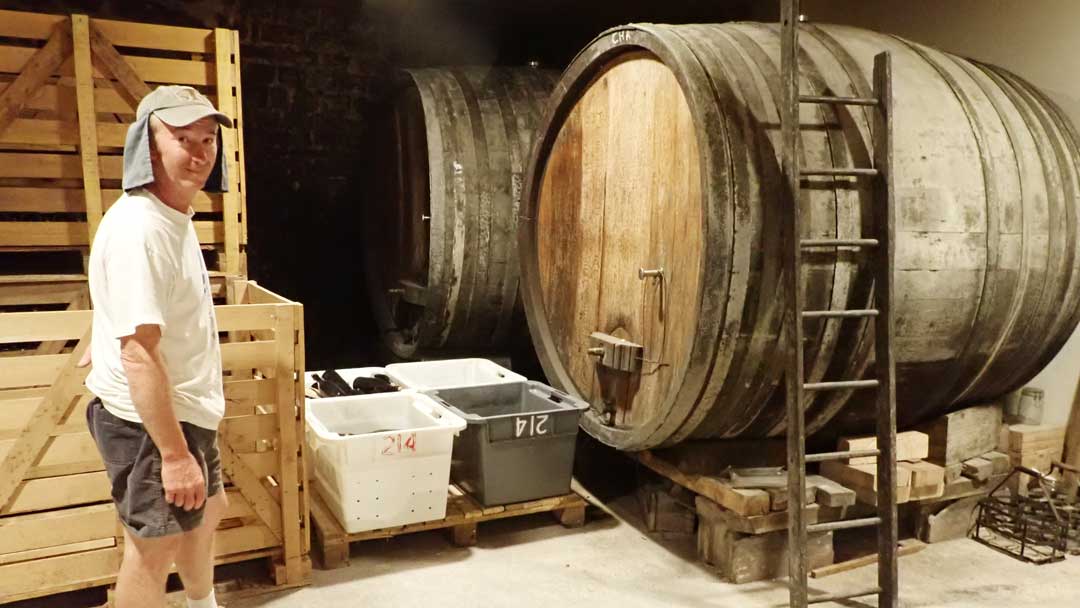
The production is slightly too small to use gyro palette. All bottles are placed in old pupitres where the riddling of the bottles is done by hand which takes about three weeks before it is time for disgorging, which is also done by hand without freezing. The wooden racks can hold 700 bottles at a time. The pupitre is then filled with new bottles and the procedure is repeated. The winery has five employees and I hope that they will take turns turning the 40,000 bottles.
Bertrand looks at his watch and sees that time is running away, but have time to do one more thing, he says and rushes down into the cellar. When he shows up in the courtyard he has a Fidèle from 2012 in one hand. At the top of the bottle is a metal cap shining. In the other hand, he holds the disgorging tool and the manoeuvre is done with obvious simplicity. Of course, if all the bottles are disgorged by hand, this exercise can be done blindfolded.
So, how was it, a “recently disgorged” Vouette et Sorbée Fidèle 2012? On the nose pure magic. Extremely detailed and with clear and evocative tones. On the palate we can call it interesting, the wine is simply not ready yet. But if the opportunity to get your hands on a bottle pops up, you can go ahead without hesitation. The wine you get in the glass is the result of purposefully detailed work. Or as he said himself, the bad boy of Champagne, “The wine is best drunk at 12 degrees C and together with really good friends.”
Sven-Olof Johansson is a wine enthusiast in Stockholm with a long history of wine tasting experiences.
[Ed’s comment: Vouette & Sorbée is in the Côte des Bar (Aube), the part of Champagne that is farthest south and that one often forgets when talking about Champagne. There are many very exciting and talented producers here. It is by no means a “second rank” area, as some commentators claim, but a source of delicious often slightly more powerful champagnes. Vouette & Sorbée is also one of the recommendations in BKWine’s book on Champagne.]
[box type=”note”]
If you want to know more about champagne, all the secrets of how it is done, and get lots of recommendations of the best champagne growers, those who make personal and magnificent wines, then you can read BKWine’s book on the wine and the growers in Champagne. (If you read Swedish, since it is not – yet? – available in translation.)
[/box]
[box type=”info”]
The best way to enjoy champagne, taste the wine, and learn more about how it is done is, of course, to travel there. Join us on a luxurious wine tour in Champagne with many winery visits and plenty of wines, with BKWine.
Travel to the world’s wine regions with the wine experts the wine tour specialist.
The best wine tours. BKWine wine tour.
[/box]


